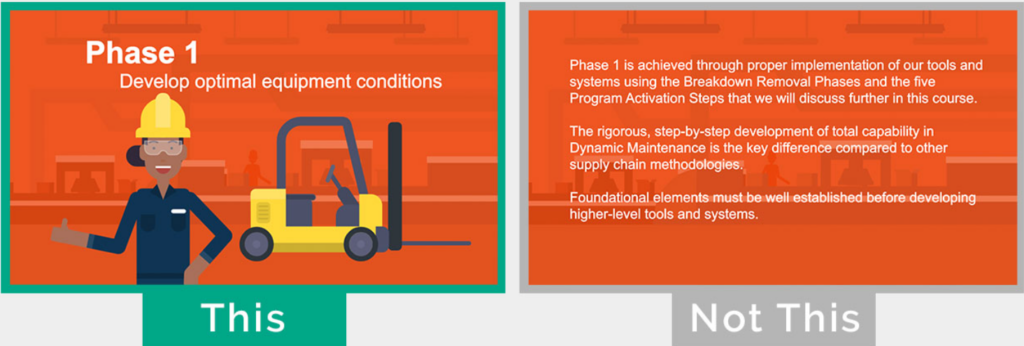How does theory support the design of multimedia?
Implementing or creating multimedia – videos, slideshows, diagrams, infographics, podcasts etc. – requires careful planning and consideration of how multimedia resources can support learning.
Multimedia design principles draw on cognitive research and can help guide the development of learning resources that effectively combine multiple modalities. When this is done strategically, it reduces the effort for our brains to process the information which results in better learning.
How can I effectively design multimedia resources?
The tabs below briefly describe Mayer’s (2009) 12 Principles of Multimedia Learning, with examples included. The principles were designed to provide practical, empirically-based guidance in the use of multimedia for educational purposes. Drawing on Cognitive Load Theory and years of cognitive research, the principles describe how to best develop multimedia resources in order to best support the way our brains function. We encourage you to use these principles as a guide or checklist when developing your multimedia learning resources.
Each principle has been associated with a strategy for managing cognitive load, as well as the practical design goals articulated by Robert Talbert in his research on effective educational videos:
Adapted from University of British Columbia. Documentation: Design Principles for Multimedia. https://wiki.ubc.ca/Documentation:Design_Principles_for_Multimedia under CC BY-SA 4.0.
Image credits: DeBell, Andrew. (2019, December 11). How to use Mayer’s 12 Principles of Multimedia [Examples Included]. Retrieved from https://waterbearlearning.com/mayers-principles-multimedia-learning/. Used with permission.
References
De Jong, T. (2010). Cognitive load theory, educational research, and instructional design: Some food for thought. Instructional Science, 38, 105-134.
Heick, Terry. Cognitive load theory: A definition. teachthought. https://www.teachthought.com/learning/cognitive-load-theory/.
Mayer, R. E. (2009). Multimedia learning (2nd ed.). New York, NY, US: Cambridge University Press.
Talbert, R. (2014). Making Screencasts: The pedagogical framework. Retrieved from: http://vimeo.com/110373539












